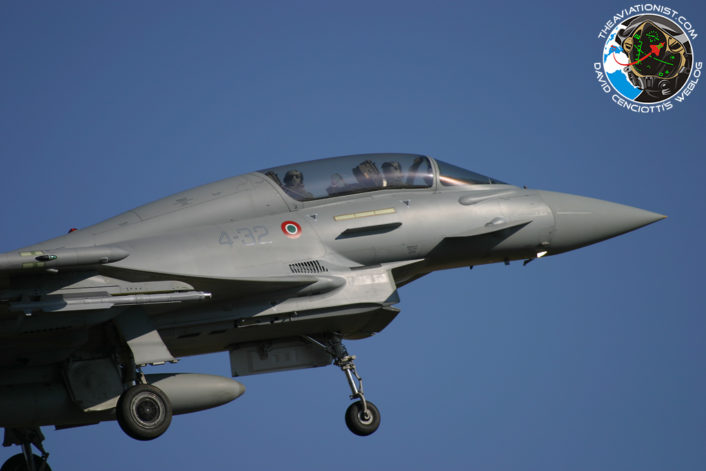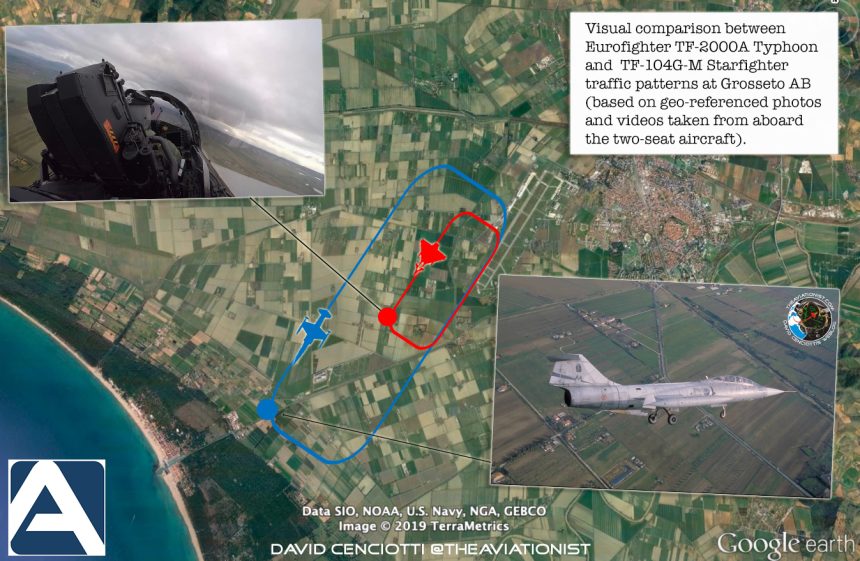What Does The Different Shape Of Their Overhead Traffic Patterns Say About the iconic F-104 and the more modern Typhoon’s Flight Characteristics?
As most of The Aviationist‘s readers know, as a journalist, I’ve had the opportunity to fly both in the F-104 Starfighter and the Eurofighter Typhoon. Both flying experiences occurred at Grosseto airbase, located in central Italy, to the northeast of Rome, home of the 4° Stormo (4th Wing) of the Italian Air Force. Although the sorties were carried out 16 years apart (the one in the TF-104 was in November 2000, the latest, in the Typhoon, in January 2016), in both cases I had my cameras with me and I’ve taken many photographs before, during and after my flights.
By geo-referencing the shots, I’ve built the path followed by the aircraft in the so-called overhead pattern: military aircraft recovering to their base in VFR (Visual Flight Rules) often perform an overhead pattern that allows the formation, once overhead the runway (hence the name), to “break” a few seconds apart and enter an in-trail downwinde leg. The downwind is then followed by a base turn and final approach.
The infographic gives you an idea of the different kind of patterns we flew during both missions. As you may see, the red line (that shows the Typhoon’s pattern) is much closer to the runway than the blue line: indeed, the visual pattern for a Starfighter was quite wide and flat.
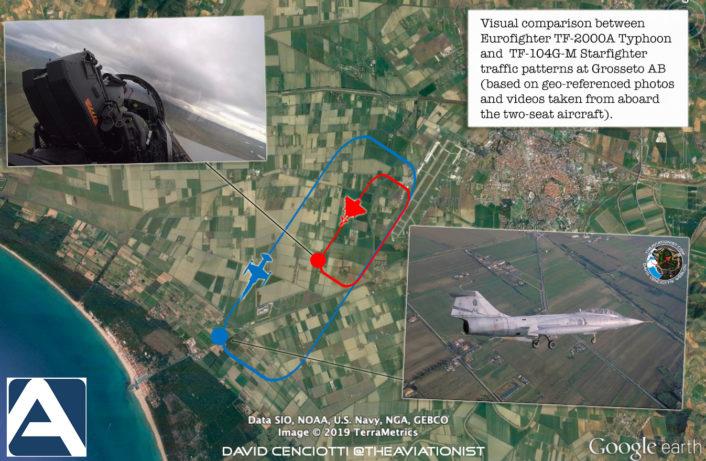
I’ve asked Fabio Consoli, a friend and a former pilot with very strong credentials to comment the different “shape” of the overhead pattern flown by both the F-104 (retired in 2004) and the Typhoon. Why Fabio? Simple: he has been an F-104 pilot in the 80s (flying with the 28th Gruppo – squadron – from 1986 to 1988); then he moved to the Reparto Sperimentale Volo (the Italian Air Force Test Wing based at Pratica di Mare airport), graduating from the USAF Test Pilot School in Edwards Air Force Base, California; he then retired, as a Lt. Col. after commanding the 14° Gruppo (Squadron) of the 2° Stormo (Wing) flying the AMX Ghibli. He currently flies B777 for Alitalia but he’s flown both the Zipper (as the F-104 was dubbed in the fighter pilot community) and the Typhoon.
“Two are the factors to be considered: first, pattern altitude and final approach glide angle; second, base turn and final speeds,” Fabio said in a message. “A 3rd and 4th generation fighter would tipically fly a landing pattern at 1,500 ft AGL. The F-104 flew it at 2,500 feet. The Starfighter would approach the Initial Point at 325 KIAS with TO flaps. Break at 60° of bank and 2g at level flight. The higher altitude (2,500 vs 1,500 ft) was to allow for a (difficult) recovery in case of a BLC (Boundary Layer Control) failure or asimmetry while lowering the flaps to the LAND position (45°).
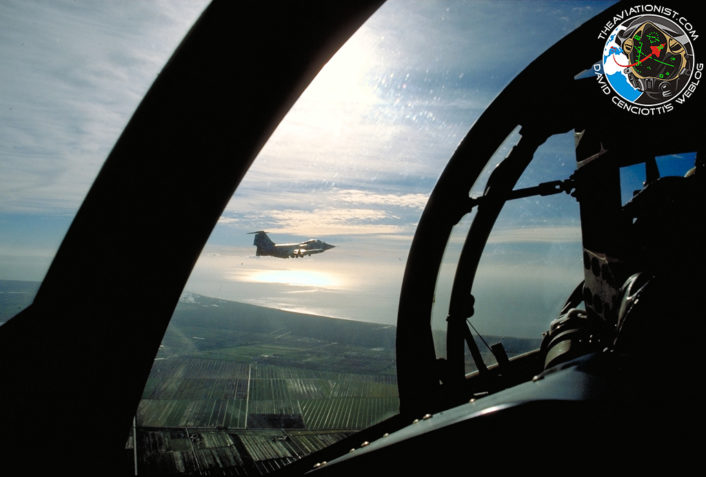
“Furthermore, the BLC, to function properly, required an engine RPM not lower than around 86% (you would tipically fly final with 92-93% RPM) so the Starfighter final path angle was of 2 degrees instead of 3 of a newer fighter to allow for that high engine power. The F-104 would also easily develop a high sink rate on final if allowed to fly a steeper approach. The Starfighters speed in the pattern were also amazing: tipically 205 KIAS in base turn and 185 in final. The Typhoon would fly 13/14 degrees of Alpha [AOA – Angle of Attack] all around the pattern, resulting in speeds slightly above 150 in base and 135 in final, depending on the grossweight. These two factors combined explain the much wider pattern of the Starfighter vs the Typhoon one.”
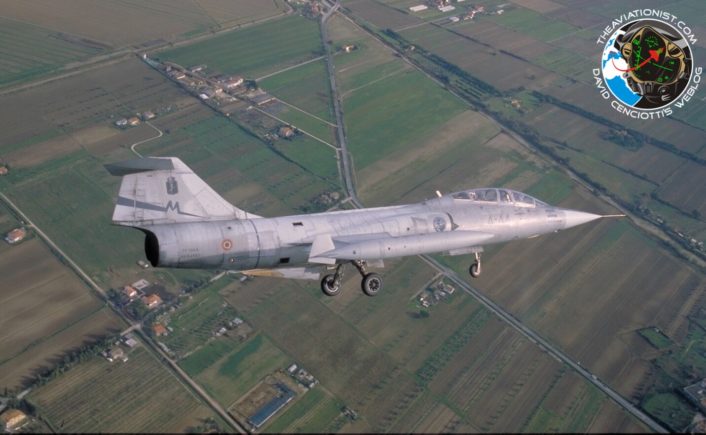
Indeed, as I was shown by “Federico”, the former 9th Gruppo commander I flew with in 2016, the Typhoon approaches the IP at 300 KIAS (instead of 325KIAS) and performs the break exactly as the F-104: 60° bank and 2g turn. But the different geometry of the wing and the slower ingress speed allow for a much “closer” traffic pattern, as the infographic shows.
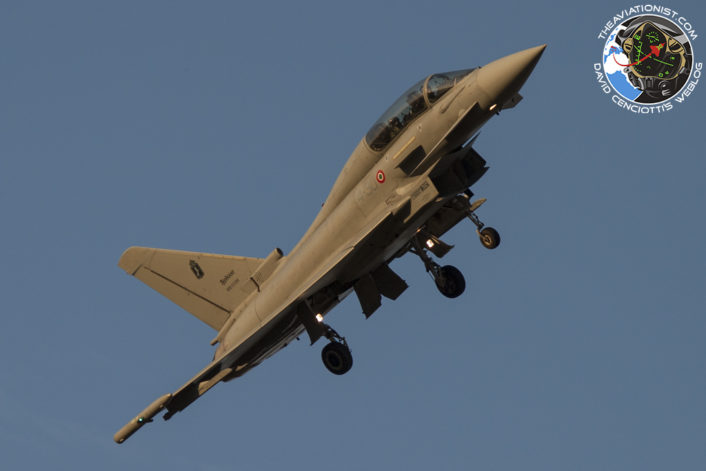
Although comparing an F-104 to a Eurofighter Typhoon may sound a bit weird to most of my American readers, my Italian and European followers most probably remember that the two aircraft flew together for a short period of time in 2004 and, while some Italian pilots (including “Federico”) had the opportunity to transition to the F-16 ADF before moving on to the F-2000, some other Italian fighter jocks went straight from flying the Cold War era F-104 (first flight in 1954) to flying the Typhoon (first flight 40 years later, in 1994) in a matter of few months.
